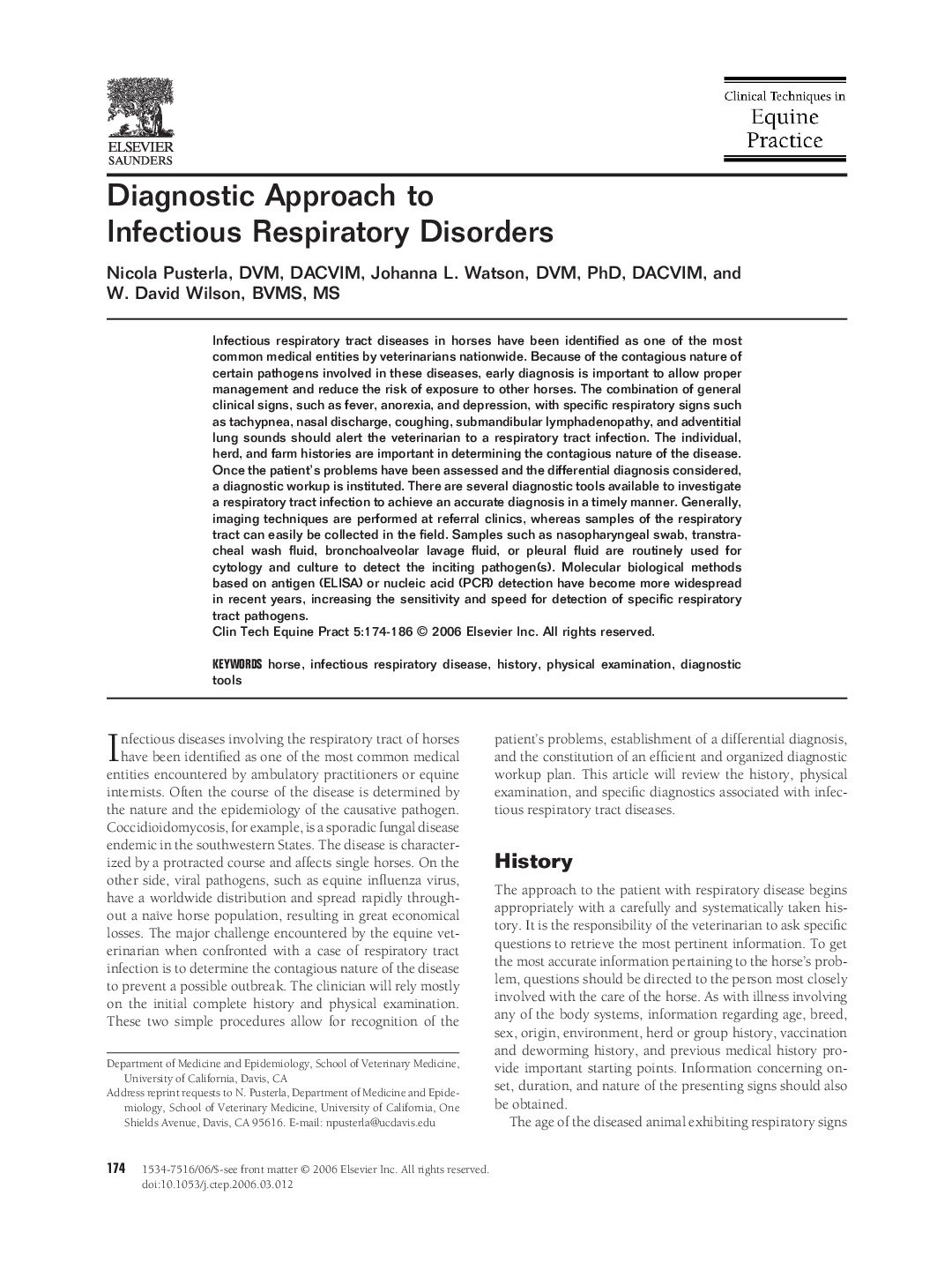| Article ID | Journal | Published Year | Pages | File Type |
|---|---|---|---|---|
| 2393245 | Clinical Techniques in Equine Practice | 2006 | 13 Pages |
Infectious respiratory tract diseases in horses have been identified as one of the most common medical entities by veterinarians nationwide. Because of the contagious nature of certain pathogens involved in these diseases, early diagnosis is important to allow proper management and reduce the risk of exposure to other horses. The combination of general clinical signs, such as fever, anorexia, and depression, with specific respiratory signs such as tachypnea, nasal discharge, coughing, submandibular lymphadenopathy, and adventitial lung sounds should alert the veterinarian to a respiratory tract infection. The individual, herd, and farm histories are important in determining the contagious nature of the disease. Once the patient’s problems have been assessed and the differential diagnosis considered, a diagnostic workup is instituted. There are several diagnostic tools available to investigate a respiratory tract infection to achieve an accurate diagnosis in a timely manner. Generally, imaging techniques are performed at referral clinics, whereas samples of the respiratory tract can easily be collected in the field. Samples such as nasopharyngeal swab, transtracheal wash fluid, bronchoalveolar lavage fluid, or pleural fluid are routinely used for cytology and culture to detect the inciting pathogen(s). Molecular biological methods based on antigen (ELISA) or nucleic acid (PCR) detection have become more widespread in recent years, increasing the sensitivity and speed for detection of specific respiratory tract pathogens.
